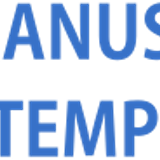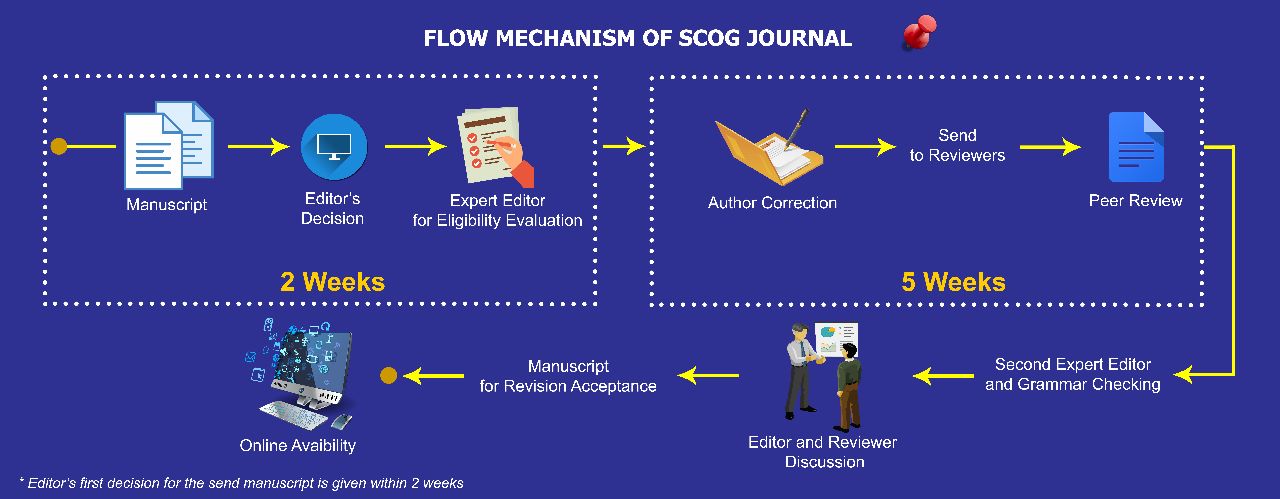Build of Machine Learning Proxy Model for Prediction of Wax Deposition Rate in Two Phase Flow Water-Oil
Abstract
Wax deposit is one of the major fl ow assurance experienced in the process of oil production and transportation from sub- surface to surface. Large amounts of data are required to perform modeling using existing thermodynamic models such as carbon number data from HGTC. In this paper, a machine learning algorithm using unifi ed model approach from Huang (2008). Two types of input are implemented in order to simulate infl uence of feature selection used in training and testing machine learning which are input A consists of water volume fraction (fw), shear stress (τw), effective viscosity (μe), wax concentration gradient (dC/dT), and temperature gradient (dT/dR) and input B consists of water volume fraction (fw), shear stress (τw), effective viscosity (μe), wax concentration gradient (dC/dT), temperature gradient (dT/dR), shear stripping variable (SV) dan diffusion variable (DV). The random forest with Ntree = 500 known to be the best machine learning method compared to others. Based on accuracy parameter it achieves error parameter R-squared (R2) for training, testing and total data for input A and B are 0.999, 0.992, 0.9975 and 0.999, 0.993, 0.9977, respectively.
Keywords
Full Text:
PDFReferences
Agustin, M. & Prahasto, T., 2012. Penggunaan Jaringan
Syaraf Tiruan Backpropagation Untuk Seleksi
Penerimaan Mahasiswa Baru Pada Jurusan Teknik
Komputer Di Politeknik Negeri Sriwijaya. Jurnal
Sistem Informasi Bisnis, 2(2), pp. 089-097.
Azevedo, L. F. A. & Teixeira, A. M., 2003. A Critical
Review of the Modeling of Wax Deposition. Journal
Petroleum Science & Technology, 21(3), pp. 393-408.
Burger, E. D., Perkins, T. K. & Striegler, J. H., 1981.
Studies of Wax Deposition in the Trans Alaska Pipeline.
Journal Of Petroleum Technology, 33(06), p. 1075–
Chi, Y., Daraboina, N. & Sarica, C., 2017. Effect of the
Flow Field on the Wax Deposition and Performance of
Wax Inhibitors: Cold Finger and Flow Loop Testing.
Energy Fuels, 31(5), pp. 4915-4924.
Chu, Z.-Q., Sasanipour, J., Saeedi, M., Baghban, A.,
& Mansoori, H., 2017. Modeling of Wax Deposition
Produced in The Pipelines Using PSO-ANFIS
Approach. Journal Petroleum Science and Technology,
(20), pp. 1974-1981.
Fan, K., Huang, Q., Li, S. & Yu, W., 2015. Wax Deposition
Rate of Water-in-Crude Oil Emulsions Based on
Laboratory Flow Loop Experiment. Journal of
Dispersion Science and Technology, 38(1), pp. 1-53.
Giacchetta, G., Marchetti, B., Leporini, M., Terenzi, A.,
Dall’Acqua, D., Capece, L., & Grifoni, R.C., 2019.
Pipeline Wax Deposition Modeling: A Sensitivity
Study on Two Commercial Software. Petroleum, 5(2),
pp. 206-213.
Huang, Q., Li, Y. & Zhang, J., 2008. Unified wax
deposition model. Project: Physical properties of wax
deposits on the walls of crude pipelines, Volume 29,
pp. 459-462.
Huang, Q. & Ma, J., 2008. Prediction of Wax Deposition
of Crude Using Statistical and Neural Network
Methods. Calgary, Alberta, Canada, International
Pipeline Conference.
Hu, Z., Meng, D., Liu, Y., Dai, Z., Jiang, N., & Zhuang,
Z., 2019. Study of Wax Deposition Law by Cold
Finger Device. Journal Petroleum Science and
Technology, 37(15), pp. 1846-1853.
Joshi, R. R., 2017. Modeling and Simulation of Wax
Deposition in Crude Oil Pipeline. International
Journal of Engineering Research and Technology,
Volume 10, pp. 297-300.
Kamari, A., Mohammadi , A. H., Bahadori, A. &
Zendehboudid, S., 2014. A Reliable Model for
Estimating the Wax Deposition Rate During Crude Oil
Production and Processing. Journal Petroleum Science
and Technology, Volume 32, pp. 2837-2844.
Matzain, A., Apte, M.S., Zhang, H.-Q., Volk, M., Redus,
C.L., Brill, J.P., & Creek, J.L., 2000. Multiphase
Flow Wax Deposition Modelling. Banff, Canada,
ETCE, pp. 415-441.
Montero, F., 2020. Wax Deposition Analysis for Oil
and Gas Multiphase Flow in Pipelines. Copenhagen,
Denmark: Aalborg University.
Mulyahati, I. L., 2020. Implementasi Machine Learning
Prediksi Harga Sewa Apartemen Menggunakan
Algoritma Random Forest Melalui Framework
Website Flask Python. Yogyakarta: Universitas Islam
Indonesia.
Obaseki, M. & Elijah, P. T., 2020. Dynamic Modelling
and Prediction of Wax Deposition Thickness in Crude
Oil Pipelines. Journal of King Saud University -
Engineering Sciences, 33(6), pp. 437-445.
Octaviani, P. A., Wilandari, Y. & Ispriyanti , D., 2014.
Penerapan Metode Klasifi kasi Support Vector Machine
(SVM) Pada Data Akreditasi Sekolah Dasar (SD)
Di Kabupaten Magelang. Jurnal Gaussian, 3(4), pp.
-820.
Pedersen, K. S., Skovborg, P. & Roenningsen, H.
P., 1991. Wax precipitation from north sea crude
oils-Thermodynamic modeling. Energy Fuels, 5(6),
p. 924–932.
Singh, P., Venkatesan, R., Fogler, H. S. & Nagarajan,
N., 2000. Formation and aging of incipient thin fi lm
wax-oil gels. AIChE Journal, 46(5), pp. 1059-1074.
Sousa, A. M., Matos, H. A. & Guerreiro, L., 2019. Wax
Deposition Mechanisms and The Effect of Emulsions
and Carbon Dioxide. Journal Petroleum, 6(3),
pp. 216-226.
Sutton, C. D., 2004. Classifi cation and Regression Trees,
Bagging, and Boosting. Handbook of Statistics,
Volume 24, pp. 303-329.
Wang, W. & Huang, Q., 2014. Prediction for Wax
Deposition in Pipeline Validated by fi eld Pigging.
Journal of the Energy Institute, 87(3), pp. 196-207.
Wei, Y., Wu, M. & Zhao, L., 2010. Wax Deposition Rate
Model for Crude Oil Pipeline. Yantai, China, IEEE.
Xie, Y. & Xing, Y., 2017. A Prediction Method for
the Wax Deposition Rate Based on a Radial Basis
Function Neural Network. Petroleum, 3(2), pp. 237-
Zheng, S., 2017. Wax Deposition from Single-Phase
Oil Flows and Water-Oil Two-Phase Flows in Oil
Transportation Pipelines. Ann Arbor, Michigan: The
University of Michigan.
Zhou, Y., Gong, J. & Wang, P., 2015. Modeling of
Wax Deposition for Water-In-Oil Dispersed Flow.
Asia-Pacifi c Journal Chemical Engineering, 11(1),
pp. 108-117.
DOI: https://doi.org/10.29017/SCOG.45.1.922

This work is licensed under a Creative Commons Attribution-NonCommercial-NoDerivatives 4.0 International License.






